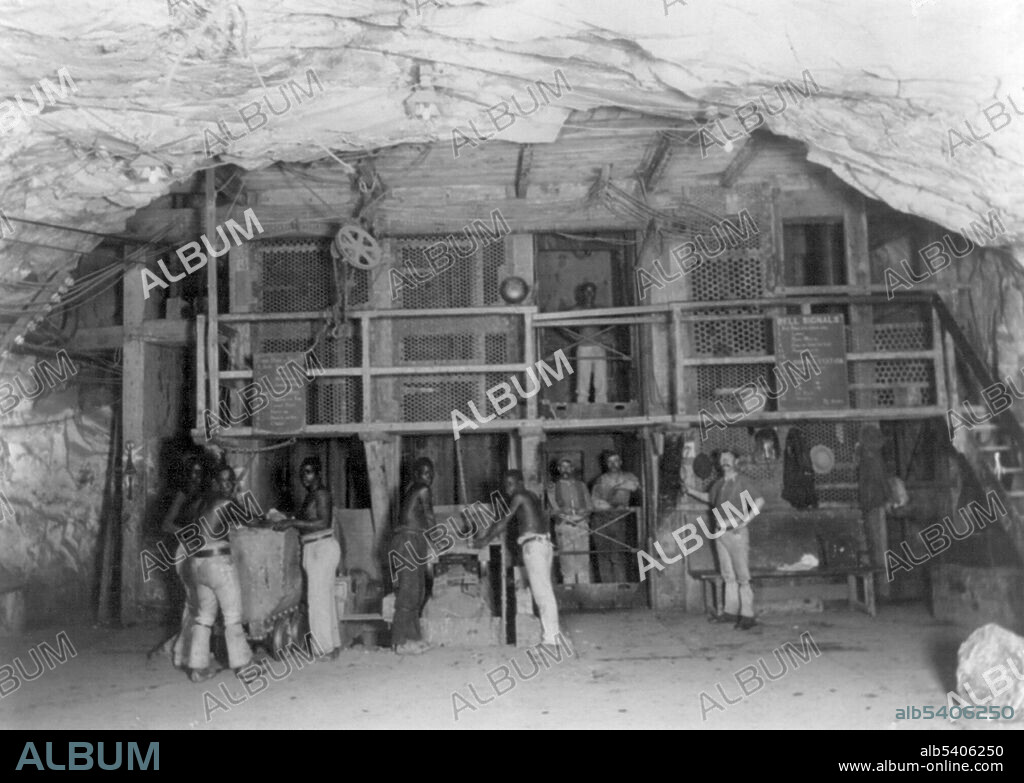alb5406250
South Africa, Kimberley Diamond Mine

|
Añadir a otro lightbox |
|
Añadir a otro lightbox |



¿Ya tienes cuenta? Iniciar sesión
¿No tienes cuenta? Regístrate
Compra esta imagen

Título:
South Africa, Kimberley Diamond Mine
Descripción:
Ver traducción automática
Entitled: "Men working 2000 feet underground in Kimberley Diamond Mine, South Africa." The 1867 discovery of diamonds in the Cape Colony, South Africa, radically modified not only the world’s supply of diamonds but also the conception of them. The first diamond discoveries in South Africa were alluvial. By 1869, diamonds were found far from any stream or river. First in yellow earth and below in hard rock called blue ground, later called kimberlite, after the mining town of Kimberley. In the 1870's and 1880's Kimberley, encompassing the mines that produced 95% of the world’s diamonds, was home to great wealth and fierce rivalries. In 1872, one year after digging started, the population of the camp of diggers grew to around 50,000. As digging progressed, many men met their deaths in mining accidents. The unsanitary conditions, scarcity of water and fresh vegetables as well as the intense heat in the summer, also took their toll. In 1888 the leaders of the various mines decided to amalgamate the separate diggings into one big mine and one big company known as De Beers Consolidated Mines Limited. Frank and Frances Carpenter Collection, circa 1890-1905.
Crédito:
Album / Science Source
Autorizaciones:
Modelo: No - Propiedad: No
¿Preguntas relacionadas con los derechos?
¿Preguntas relacionadas con los derechos?
Tamaño imagen:
4350 x 3102 px | 38.6 MB
Tamaño impresión:
36.8 x 26.3 cm | 14.5 x 10.3 in (300 dpi)
Palabras clave:
AFRICA • BASES • BLANCO Y NEGRO • FAMOSO • FOTO • HISTORIA • MINA DIAMANTES • MINA • MINERIA • MINERO • S. XX • SIGLO XIX • SIGLO XX • SUBTERRANEO • SUDÁFRICA
 Pinterest
Pinterest Twitter
Twitter Facebook
Facebook Copiar enlace
Copiar enlace Email
Email
